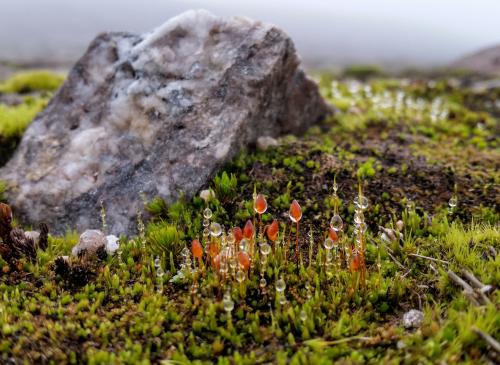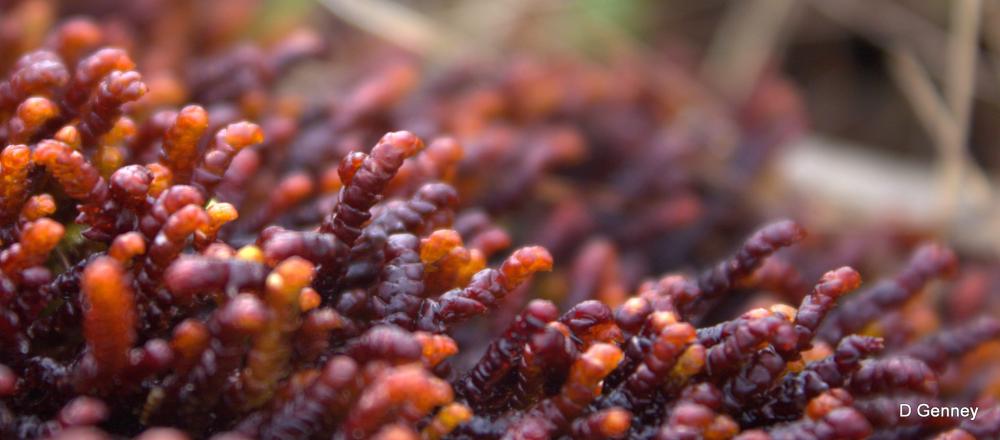The Scottish Government is currently responding to a multitude of grand and complex environmental challenges, such as biodiversity loss and climate change. But how do we know if these responses, or the money spent on delivering them, are having the desired effect? Having a robust suite of environmental quantitative measures, or indicators, is vital when trying to deliver key policy targets. Our work has focussed in particular on two sets of indicators, Ecosystem Health Indicators and the Natural Capital Asset Index. For the former, we have used bryophytes (i.e. mosses and liverworts) to develop new indicators to monitor ecosystem health, in support of Scottish Natural Heritage (SNH). These indicators fill a gap by providing measures that are responsive to rapid environmental change and demonstrate how we can take long-running datasets and use them in a novel way to assess the health of our ecosystems. The latter is a unique approach, and our work has helped to strengthen and promote it. (Image courtesy of David Genney, Scottish Natural Heritage).

Stage
Directory of Expertise
Purpose
We are all part of ecosystems and benefit from the services they provide, whether it is clean water or the health benefits of a walk in the woods. Scotland has a wide range of habitats and ecosystems, each of which makes a unique contribution to the wellbeing of those who live and work here. The indicators we use to monitor ecosystem health help us to understand how far they are from a ‘good’ state, and the extent to which they retain their capacity to deliver these benefits under human and environmental pressures, like climate change. Our work on developing new ecosystem health indicators has focussed on using records of bryophytes (i.e. mosses and liverworts).

Purple Spoonwort (Pleurozia purpurea) Image courtesy of David Genney, Scottish Natural Heritage
Despite not getting as much public recognition, Scotland has internationally important populations of bryophytes. As well as being important in their own right, we have been able to use them to assess the impacts of nitrogen pollution and summer temperatures on ecosystem health. Natural capital is a collective term for the habitats and ecosystems that provide social, environmental and economic benefits to humans. The Natural Capital Asset Index (NCAI) is a composite index that brings together different sources of information to track changes in the capacity of Scotland's land-based ecosystems to provide benefits to people.
Results
We have produced two Ecosystem Health Indicators using Scottish bryophyte data. The first assesses the impact of nitrogen pollution. Many bryophytes are particularly sensitive to nitrogen pollution and so can be a helpful indicator of the impact this kind of pollution has on ecosystem health. Our work has shown that the overall impacts of nitrogen pollution on habitats has been declining since the late 1990s in Scotland. This decline mirrors the fall in NOx (but not NH3) nitrogen pollution but lags behind it by a few years as nitrogen pollution peaked around 1990. The indicator can also be broken down to regional areas, and these show variation in trends across Scotland. For example, for the Clyde and Forth in particular, indicator values continue to increase through time indicating a continued rise in nitrogen pollution impact. The data also show that indicator values are in general lower for Argyll, North Highland and West Highland and substantially higher for the Forth catchment, reflecting their different pollution and land-use histories.
Sickle-leaved Fork-moss (Kiaeria falcata). Image courtesy of David Genney, Scottish Natural Heritage
The second indicator assesses the impact of summer temperatures. For Scotland overall, a rise in the average indicator value provides good evidence that bryophytes suited to warmer climates are becoming more common in Scotland. This could reflect land-use change, as bryophytes of open habitats might be expected to also have higher indicator scores. However, the changes likely reflect the increasing summer temperatures observed in Scotland in recent decades. At the regional level, trends were relatively uniform across the country for those regions where a good statistical model could be fitted: Argyll, Clyde, Solway, Tay, Tweed and West Highland. The absence of a significant trend in North East Scotland, North Highland and Orkney and Shetland may indicate that warming is having less impact on bryophyte communities in northern Scotland, but the analysis is hampered by a lack of data for these regions.
Our work on the NCAI built upon an earlier review of the datasets used within the Index. We have continued to work jointly with Scottish Natural Heritage to assess which datasets should be included within the index, and to quality control its calculation process. We worked with SNH colleagues to produce a peer-reviewed scientific paper detailing the Index’s workings and helping to provide information on how the index can be interpreted.
Benefits
Our work on Ecosystem Health Indicators demonstrates how we can take long-running datasets and use them in a novel way to assess the health of our ecosystems and contribute to new suites of indicators. The new EHI indicators fill a gap by providing measures that are responsive to rapid environmental change. Bryophytes are exposed directly to atmospheric pollutants, and any changes tend to appear in them first. It is to be hoped that by including bryophytes in a national reporting framework, we are also able to increase the recognition for this often-overlooked taxon.
Scottish Natural Heritage’s NCAI is a unique approach, and our work has helped to strengthen and promote it. The NCAI is now one of the National Indicators that the Scottish Government uses to measure Scotland’s overall wellbeing. The NCAI is included in the National Performance Framework as one of the economic indicators, helping to assess the sustainability of Scotland’s growth and development. The NCAI’s inclusion demonstrates that it is clear and easy to use by policymakers and that it is a reliable tool for decision-making. Our future work, in support of SNH, will focus on identifying new data to help strengthen the NCAI’s coverage.
Project Partners
- James Hutton Institute
- Scottish Natural Heritage